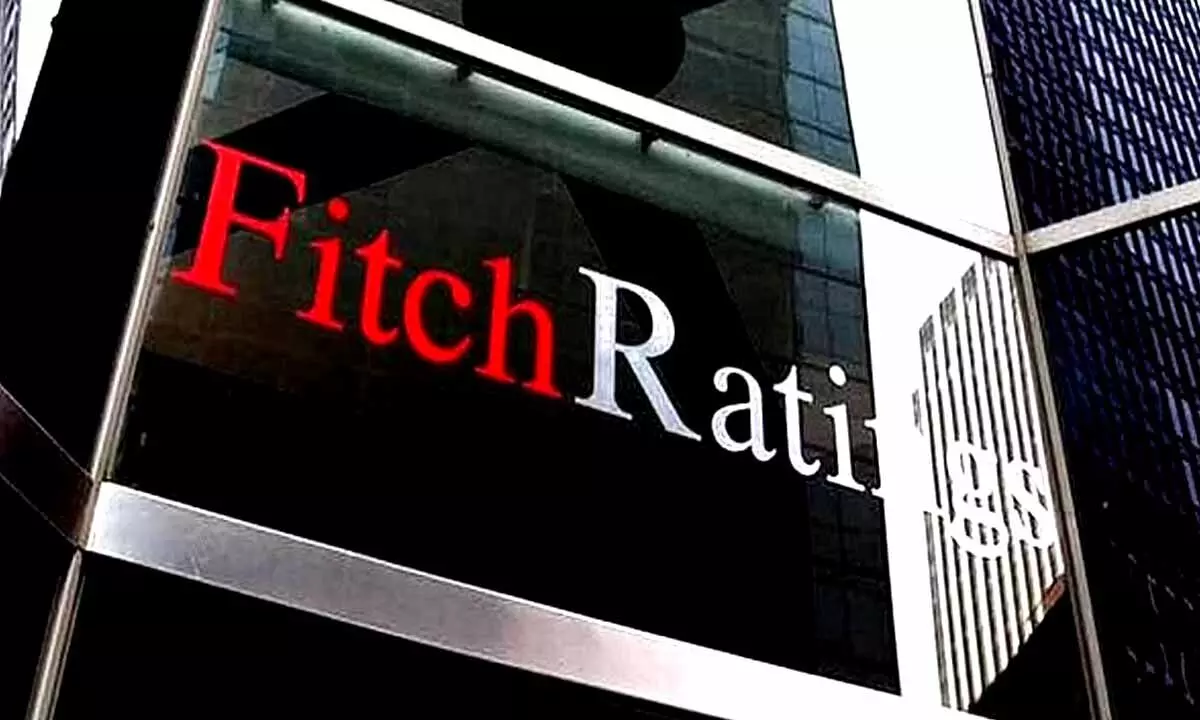Risk to India's Sovereign Rating from external pressures is limited: Fitch Ratings
The risk to India's sovereign rating from external pressures is limited, said Fitch Ratings on Wednesday.
image for illustrative purpose

Chennai, Oct 19 The risk to India's sovereign rating from external pressures is limited, said Fitch Ratings on Wednesday.
In its latest report, Fitch Ratings said India's external buffers appear sufficient to cushion risks associated with the rapid monetary policy tightening in the US and high global commodity prices.
"External finances are becoming less of a strength in India's credit profile, but we expect foreign-exchange reserves to remain robust and India's current-account deficit to be contained at a sustainable level," Fitch Ratings said.
According to the credit rating agency, public finances is the key driver of the rating and are only modestly affected by these developments, particularly as India is relatively insulated from global volatility due to the sovereign's limited reliance on external financing.
India's foreign reserves fell by almost $101 billion in January-September 2022, but are still large at around $533 billion.
The decline has reversed much of the reserve accumulation that occurred during the Covid-19 pandemic, and reflects valuation effects, a widening current-account deficit, and some intervention by the Reserve Bank of India (RBI) to support the Indian rupee's exchange rate. The RBI has attributed about two-thirds of the decline to valuation effects.
According to Fitch Ratings, India's forex reserve cover remains strong at about 8.9 months of imports in September.
"This is higher than during the "taper tantrum" in 2013, when it stood at about 6.5 months, and offers the authorities scope to utilise reserves to smooth periods of external stress," Fitch Ratings said.
Large reserves also provide reassurance about debt repayment capacity. Short-term external debt due is equivalent to only about 24 per cent of total reserves.
Gross external debt stood at 18.6 per cent of gross domestic product (GDP) in 2Q22, which is low compared with the median of 72 per cent for 'BBB' rated sovereigns in 2021.
Sovereign exposures are small, with only about four per cent of GDP in primarily multilateral financing.
Foreign investor holdings of domestic sovereign debt represent under two per cent of the total, reducing risk of spillovers to the wider market should they seek to reduce their exposure, Fitch Ratings said.
The credit rating agency forecast India's current-account deficit in the fiscal year ending March 2023 (FY23) to reach 3.4 per cent of GDP, from 1.2 per cent in FY22.
Imports have surged on strong domestic demand growth and high oil and coal prices. Meanwhile, export growth has moderated from the fast pace seen in January-June 2022, amid declines in prices for steel, iron ore and agricultural products.
Recessions in key European and US export markets will weigh on near-term export prospects.
"However, we forecast the current-account deficit to narrow in FY24, to 2.0 per cent of GDP, as easing global energy prices will also dampen imports. Our robust medium-term economic growth outlook on India should facilitate financing of the deficit, particularly from FDI," the report notes.
According to Fitch Ratings, the widening of current account deficit partly reflects a run-down in household savings, which rose markedly during the pandemic.
"Nonetheless, we expect India's current-account deficit will be wider in the next few years than it was in the period prior to the pandemic. This is partly because we see fiscal deficits remaining above pre-pandemic levels, with only gradual consolidation, amid increased public capex spending," Fitch Ratings said.
According to the credit rating agency, the RBI will continue to use reserves to manage exchange-rate volatility and this will probably erode reserve buffers further in the near term, but the impact will depend on the scale and duration of intervention.
Domestic factors are the primary driver of the RBI's current monetary policy tightening.
"However, risks to our current forecast that India's repo rate will peak at 6 per cent in FY24 are skewed to the upside, as there is a significant chance of rate hikes in the US beyond those in our assumptions, which could put further downward pressure on the rupee and increase imported price inflation," Fitch Ratings said.

